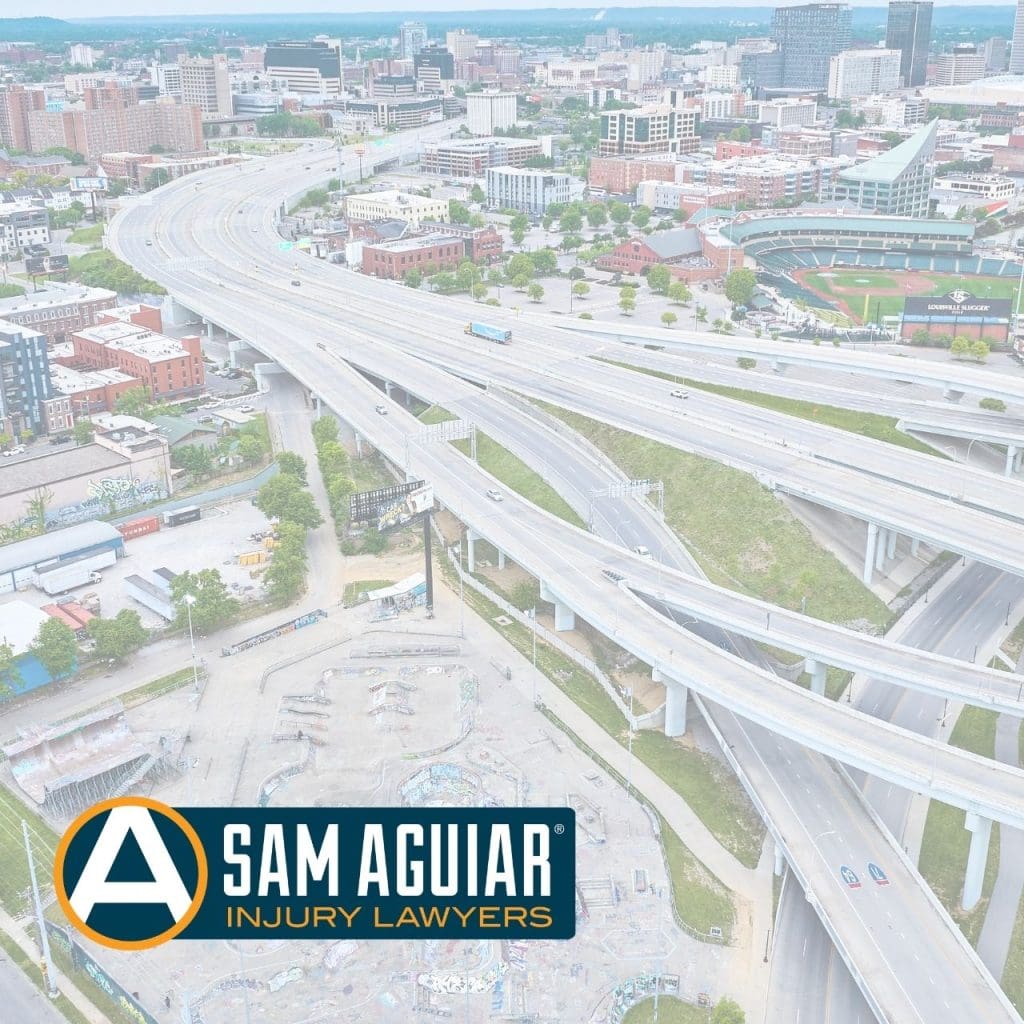Understanding Louisville’s Landscape
A recent US News and World Report study examined the number of fatal accidents per capita in the 50 largest U.S. cities from 2016 to 2020. The study also looked at the average fatality rate per mile, the number of DUI arrests per capita, and auto thefts. Of the 50 cities, Louisville ranked fourth. Only Memphis, Albuquerque, and Detroit were considered to be more dangerous. Drivers must be aware of the most dangerous roads and intersections to be more alert when traveling. They should also know how to report an accident and, if injured, how to contact Louisville injury lawyers.
Intersections are inherently dangerous. According to the U.S. Department of Transportation, 25% of traffic fatalities and 50% of all traffic injuries are attributed to intersections. Knowing some of the most dangerous intersections in Louisville can reduce the chance of needing injury lawyers in Louisville.
Here is a list of three of the most dangerous intersections in Louisville.
Accident Rates and Trends in Louisville
Like many other cities, Louisville experiences a range of car accidents that affect its residents and visitors. Understanding the accident rates and trends in Louisville can help individuals make informed decisions about where to live, work, and visit.
Louisville has seen fluctuations in accidents over the years, with specific areas experiencing higher crash frequency and injury accidents.
Understanding these trends is crucial for anyone considering moving to or visiting Louisville. It allows for better preparation and helps make safer choices about where to spend time in the city.
Dixie Highway at Pendleton Road
Dixie Highway (31W) had a fatality rate three times higher than similar roadways. A New Dixie Highway project was completed in 2020 to improve highway safety between Crums Lane and Greenwood Road. Medians were added, and left-turn-only lanes were installed. Unfortunately, these safety measures did not include Pendleton Road.
Pendleton Road lacks a median, so vehicles involved in an accident can be pushed into oncoming traffic. Without dedicated left-turn lanes, drivers become impatient and attempt to cross traffic prematurely. When oncoming traffic cannot stop, collisions result, and personal injury lawyers should be contacted.
Second Street at Broadway in Downtown Louisville
In 2019, Second Street and Broadway was considered the most dangerous intersection in Louisville. This area is so dangerous that the Metro Government has launched a Broadway Master Plan to make the street safer for cars, pedestrians, and cyclists. Broadway has ten of the most dangerous intersections in the region.
Like many streets intersecting Broadway, traffic uses two- and one-way streets, where pedestrians have the right-of-way. Given the congestion, drivers are tempted to disregard traffic signals and even speed limits. Many become distracted while trying to navigate through heavy traffic.
As part of its Safe System Approach, the Louisville Planning Commission is considering ways to minimize driving hazards at Broadway intersections. They believe improving Broadway essential to its revitalization.
Bardstown Road at Grinstead Drive
Bardstown Road experiences a high volume of vehicular and pedestrian traffic. It connects five different roads at the intersections, leading to dangers more significant than the interstate highways that serve as commuting routes for many Louisville residents. The Bardstown area is a cultural destination, especially along the half-mile that includes Grinstead Drive. Numerous restaurants, bars, entertainment venues, and retail shops attract visitors and residents to the area.
The dangers of Bardstown Road at Grinstead Drive were the subject of a 2021 council meeting. The primary concern was pedestrian-related accidents caused by inebriated customers and distracted shoppers. A commissioned study found that more than 20,000 vehicles pass the intersection daily. The study also found that:
Pedestrian and driver behavior contributed to the high number of accidents. Alcohol-related crashes were double those in the rest of Jefferson County.
Poor lighting reduced visibility, causing 35% of all accidents.
Infrastructure-related issues added to the 1.3 accidents per day. The four-lane undivided highway has 47 intersections without traffic signals.
Drivers should be aware of poor lighting and minimal traffic control signals as they navigate the intersection. Louisville residents who have spoken with injury lawyers understand how external conditions can contribute to a car accident.
Reducing Accidents at Dangerous Intersections
Intersections present drivers with increased information. They must be aware of the following:
Traffic directions, such as one-way streets
Multiple lanes of traffic to monitor
Pedestrians who have the right of way, regardless of where they cross
Traffic lights and stop signs
Speed limit
These factors do not include weather or road conditions that impact a vehicle’s response. Many drivers do not consider the added requirements that intersections present, which can increase the likelihood of an accident.
Louisville is working with the nonprofit Vision Zero to improve the safety of its intersections. Its goal is to achieve zero fatalities by 2050. Louisville residents and visitors can do their part to improve road safety by being aware of the dangers of intersections and using safe driving tips wherever they travel.
Car Accident? Call Sam Aguiar Injury Lawyers.
Sam Aguiar Injury Lawyers are experienced professionals who can help build the best possible case if you’re injured in a car accident. Whether you’re a driver, passenger, or pedestrian, our team will evaluate your case free of charge.



